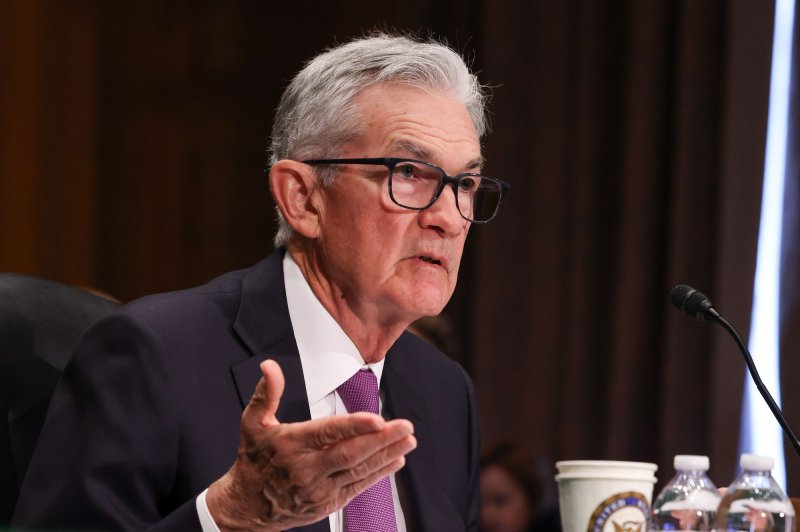As the Federal Reserve meets Wednesday, economists were expecting no interest rate cut for this meeting. The Fed continues to adhere to its position that more data is needed before cuts can begin. Fed Chair Jerome Powell said in February that the data has to indicate a sustainable path back to a 2% annual inflation rate. Photo by Jemal Countess/UPI |
License PhotoMarch 20 (UPI) — A “bumpy road” and recent rise in inflation caused the Federal Reserve to hold steady on interest rates on Wednesday, Federal Reserve Chairman Jerome Powell announced during an afternoon news conference.
Powell said the Federal Reserve committee “remains confident” that inflation eventually will reach 2% but will wait until it sees economic data “that gives us the confidence that inflation is reducing to 2%,” before lowering the Federal Reserve’s key interest rate.
The nation’s economy produced nine months of 2.5% inflation followed by two months of instability in January and February, Powell said.
He said the nation continues to “make good progress” toward lowering inflation to the Federal Reserve’s 2% goal but said it’s a “bumpy road” and the committee lacks the confidence needed to lower the current interest rate of between 5.25% and 5.5%.
Powell expressed confidence that inflation would continue a long-term decline and said he anticipates three interest rate reductions by the end of the year as economic data allows.
“We will continue to make decisions on meeting by meeting,” Powell said.
The next Federal Reserve meeting likely will be in May, he added.
“We continue to make good progress bringing inflation down,” Powell said, but cautioned “too much too soon would cause more inflation, but too late would harm employment.”
The markets responded favorably to the Fed’s decision. The S&P 500 was up 0.3%, and the Nasdaq Composite rose 0.5%, CNBC reported after the day’s end of trading. The Dow Jones Industrial Average was up more than 140 points, or nearly 0.4%, the report stated.
The delay on a cut was seen as prudent move by some.
“They need a few more data points to feel confident that inflation is heading back to target. I expect them to reaffirm three rate cuts this year, so that would suggest the first rate cut would be in June,” Moody Analytics chief economist Mark Zandi told CNBC.
That’s a turnaround from earlier this year, when market traders thought the Fed could begin interest rate cuts as soon as March.
It’s not just economists watching and wondering about the Fed’s interest rate decisions. Consumers in the market for a new car or home are anticipating possible cuts to make those big-ticket items more affordable.
Before Wednesday’s announcement, economic analysts had expected the Fed decision to adhere to the prior Fed guidance of waiting until economic data shows evidence that the inflation goal of 2% is really on track before cutting rates.
“The Fed does not want to repeat the same mistake made in the 1970s by declaring that they have conquered inflation too soon, only to have it re-emerge,” Villanova University economics professor and former Fed economist Victor Li told CBS News.
Li added that the Fed understands that it can sabotage a soft economic landing and possibly trigger a recession if interests rates stay high for too long.
In January, the Fed chose to keep interest rates unchanged.
At the time, Powell said that “economic activity has been expanding at a growing pace. We’ve had very strong growth going into the fourth quarter.”
But he added that six months of strong economic activity doesn’t mean inflation will keep going down and said the Fed needs to see data evidence that inflation is headed sustainably toward 2%.
Consumer spending ticked up in January, matching economists expectations, with the personal consumption index increasing 0.3% from the previous month. It was 2.4% higher than the year before.

